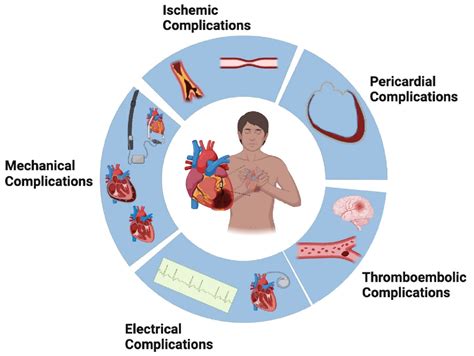Intro
Recover smoothly from gallstones surgery with our comprehensive guide, covering post-operative care, symptoms management, and diet tips for a speedy recovery from cholecystectomy, laparoscopic surgery, and gallbladder removal procedures.
The recovery process after a gallstones operation, also known as cholecystectomy, is a crucial aspect of ensuring a smooth and speedy return to normal activities. Understanding the importance of post-operative care and following a comprehensive recovery guide can significantly reduce the risk of complications and promote healing. In this article, we will delve into the world of gallstones operation recovery, exploring the benefits, working mechanisms, and key information related to the topic. Whether you are a patient preparing for surgery or a caregiver seeking to provide support, this guide is designed to provide valuable insights and practical advice.
The human body is a complex and fascinating system, and the gallbladder plays a vital role in digesting fats and absorbing essential nutrients. However, when gallstones form, they can cause severe pain, inflammation, and potentially life-threatening complications. A gallstones operation is often the most effective way to alleviate symptoms and prevent future problems. By removing the gallbladder, the risk of gallstone-related issues is significantly reduced, allowing patients to enjoy a healthier and more comfortable life.
As we explore the recovery process, it is essential to recognize that each individual's experience may vary. Factors such as overall health, age, and the presence of underlying medical conditions can influence the pace and comfort of recovery. Nevertheless, by following a well-structured recovery plan and adhering to medical advice, patients can minimize the risk of complications and achieve a successful outcome. In the following sections, we will examine the key aspects of gallstones operation recovery, including preparation, post-operative care, and long-term management.
Gallstones Operation Overview

Types of Gallstones Operations
There are two primary types of gallstones operations: laparoscopic cholecystectomy and open cholecystectomy. Laparoscopic cholecystectomy is a minimally invasive procedure that offers several benefits, including smaller incisions, less pain, and a faster recovery time. Open cholecystectomy, on the other hand, is a more traditional approach that may be necessary for patients with severe inflammation, scar tissue, or other complications. In some cases, a robotic-assisted cholecystectomy may be performed, which utilizes advanced technology to enhance precision and visibility during the procedure.Preparation for Gallstones Operation

Pre-Operative Instructions
Patients should follow specific pre-operative instructions to ensure a safe and successful operation. These instructions may include: * Avoiding food and drink for a specified period before the operation * Stopping certain medications, such as blood thinners * Removing any jewelry, contact lenses, or other items that may interfere with the operation * Arranging for transportation to and from the hospital * Having a responsible adult present to provide support and care after the operationPost-Operative Care

Pain Management
Pain management is a crucial aspect of post-operative care. Patients may experience discomfort, pain, or numbness after the operation, which can be managed with medication and other interventions. It is essential to follow the recommended pain management plan to ensure a comfortable and smooth recovery. Patients should not hesitate to report any concerns or issues to their healthcare provider, as prompt attention can help prevent complications and promote healing.Long-Term Management

Dietary Changes
Dietary changes are a vital aspect of long-term management. Patients may need to avoid foods that trigger symptoms or discomfort, such as fatty or spicy foods. A balanced diet that is low in fat and high in fiber can help promote healing and prevent future complications. Patients should work with their healthcare provider to develop a personalized dietary plan that meets their unique needs and promotes overall health.Complications and Risks

Recognizing Complications
Patients should be aware of the potential complications and risks associated with gallstones operation. Recognizing the signs and symptoms of complications can help patients seek prompt medical attention and prevent serious consequences. Patients should report any concerns or issues to their healthcare provider, including: * Increased pain or discomfort * Fever or chills * Redness or swelling at the incision site * Difficulty breathing or shortness of breath * Chest pain or palpitationsWhat are the symptoms of gallstones?
+Gallstones can cause severe pain, nausea, vomiting, and fever. Patients may also experience discomfort or tenderness in the upper right abdomen, especially after eating fatty or greasy foods.
How long does it take to recover from a gallstones operation?
+Recovery time can vary depending on the individual and the type of operation performed. Generally, patients can expect to recover within 1-2 weeks, although some may take longer to fully recover.
Can I eat normally after a gallstones operation?
+Patients may need to follow a special diet after a gallstones operation, avoiding fatty or spicy foods that can trigger symptoms or discomfort. A balanced diet that is low in fat and high in fiber can help promote healing and prevent future complications.
What are the potential complications of a gallstones operation?
+Potential complications of a gallstones operation include infection, bleeding, adhesions, and injury to surrounding organs or tissues. Patients should report any concerns or issues to their healthcare provider promptly to prevent serious consequences.
How can I prevent future gallstone formation?
+Patients can prevent future gallstone formation by following a balanced diet, staying hydrated, and avoiding foods that trigger symptoms or discomfort. Regular exercise and stress management can also help promote overall health and prevent future complications.
In conclusion, a gallstones operation is a highly effective way to alleviate symptoms and prevent future complications. By understanding the importance of post-operative care, following a comprehensive recovery guide, and making lifestyle changes, patients can promote healing, prevent complications, and enjoy a healthier and more comfortable life. We invite readers to share their experiences, ask questions, or seek guidance from healthcare professionals to ensure a smooth and successful recovery. Remember, a well-informed patient is a empowered patient, and by taking an active role in the recovery process, individuals can achieve a successful outcome and improve their overall quality of life.
